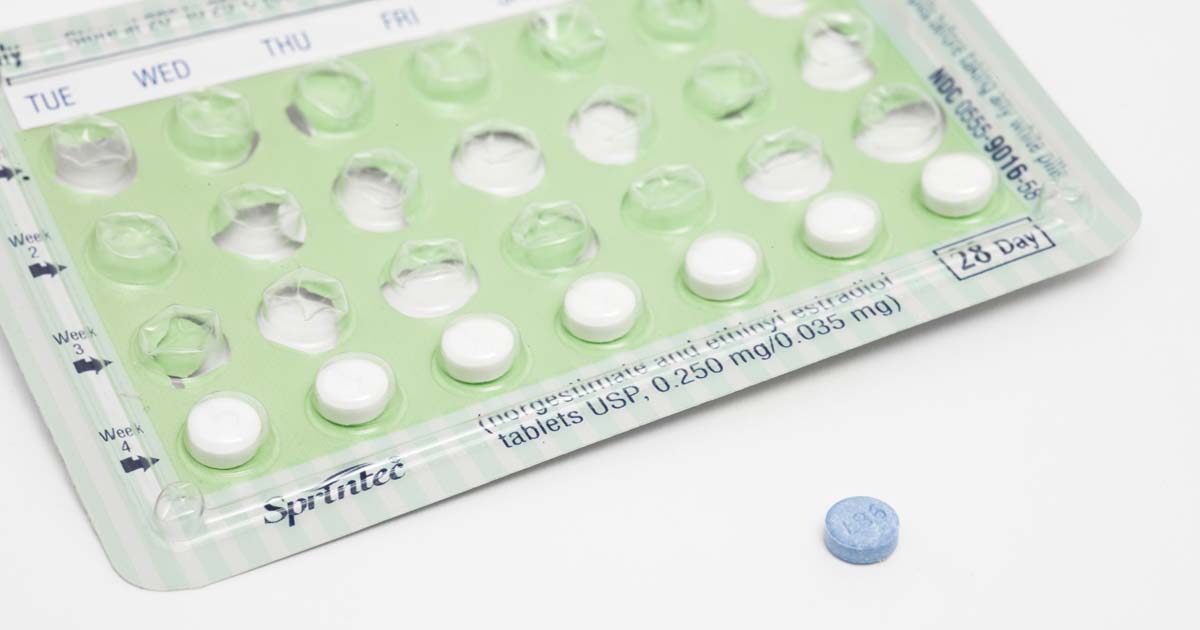We've come a long way since the 1960s when the first oral birth control and IUD were FDA approved for use by married women only.
It wasn't until 1972 that the Supreme Court legalized birth control for all citizens, regardless of marital status. Now, we have access to many different forms of contraceptive care—though it can be a bit confusing to navigate or even know what your options are. No need to worry—we're laying out your options for you!
One popular option is the oral birth control pill.
The pill is 91% effective against preventing pregnancy based on typical use patterns, meaning the variations in time that most people take their pill. There are many different options for birth control pills based on your varying hormonal needs. The birth control pill is most effective at preventing pregnancy if it's taken at the same time every day. It may also help prevent acne, cysts on your breasts and ovaries, endometrial and ovarian cancers, iron deficiency, PMS and other severe period symptoms.
Another option is the birth control patch.
The patch is also 91% effective against preventing pregnancy and is worn on the upper arm, belly, buttock or back. Easier to remember than taking the pill, the patch is replaced every three weeks. Although it's likely OrthoEvra, the patch has a slightly higher risk of blood clots and stroke than the pill.
Another longer-term option is the birth control ring.
Similar in hormone concentration to the patch and pill, the ring is also 91% effective against preventing pregnancy. The ring is inserted inside the vagina and remains there for the cycle month. Alternatively, the Depo Provera shot is administered intramuscularly by a doctor, nurse or MA once every three months, or about four times a year and is 94% effective against preventing pregnancy.
At >99% effective, both Nexplanon and Intrauterine Devices (IUDs) are some of the most effective, non-surgical forms of birth control.
Nexplanon is a matchstick-sized flexible rod that's placed just under the skin on the inside of the upper arm by a medical professional. It lasts up to five years and about 11% of people experience irregular bleeding for the first six months to 1 year of the device's implantation. IUDs are small "T" shaped devices placed in the uterus by a medical professional to prevent pregnancy. There are different varieties of IUDs, including hormonal and nonhormonal, which last anywhere from 3-10 years.
Two surgical and more permanent forms of birth control are tubal ligation and hysterectomy.
Some individuals choose sterilization for medical reasons, while others choose it when they're 100% certain they don't want to have a pregnancy in the future. Unlike other forms of birth control, hysterectomies are not reversible. Tubal ligations are also very difficult to reverse or ineffective if reversed and many surgeons will not attempt it.
Other non-hormonal and non-surgical forms of birth control include condoms, abstinence, diaphragms, breastfeeding method and fertility awareness.
Condoms are 85% effective against preventing pregnancy and latex or plastic condoms are the only form of birth control that protects against sexually transmitted infections and diseases. Condoms are often recommended to be combined with other forms of birth control. To maintain effectiveness, you should not use multiple condoms or use an external and internal condom at the same time because friction can cause breakage. You should also use condoms when engaging in oral or anal sex. Condom use is suggested for all sexual activity and can and should be used at any stage of life when partners are not monogamous or to prevent sexually transmitted infections and diseases.
Abstinence can be 100% effective in preventing pregnancy. However, the definition of abstinence is different to each individual. It could mean either no intercourse or outercourse including anal and oral sex, or it can mean strictly no intercourse. One can decide to be abstinent at any stage of life for any reason. The breastfeeding, fertility awareness or natural family planning methods are the least effective forms of birth control. These methods rely on daily activities like checking cervical mucus, tracking menstruation and the temperature method, and are only as effective as the individual's dedication and small variations in temperature are often difficult to read.
It's important to note that if you're using birth control for the sole purpose of protecting against pregnancy, consider the most reliable options. If you're wanting to protect against STI's, always use condoms, even if you are already on a reliable birth control.
Written by Nicholette Driggs Marketing & Community Outreach Coordinator, Grand Rapids OB/GYN, and Christianna Hultink, GVSU Intern Department of Gender and Women's Studies.
Courtesy of Grand Rapids OB/GYN.




